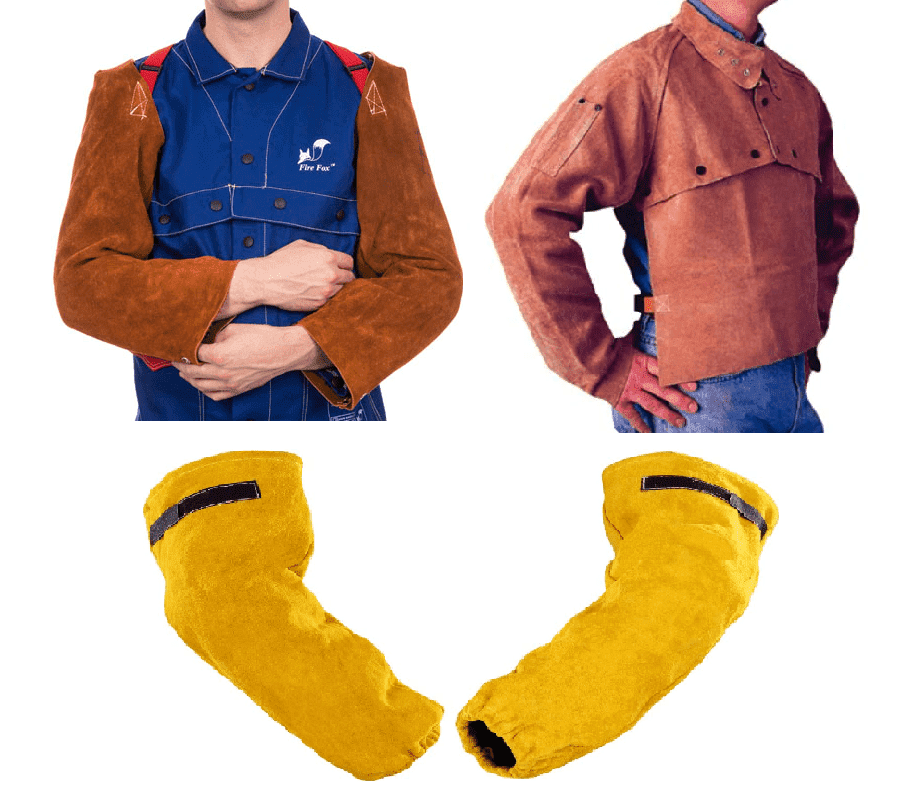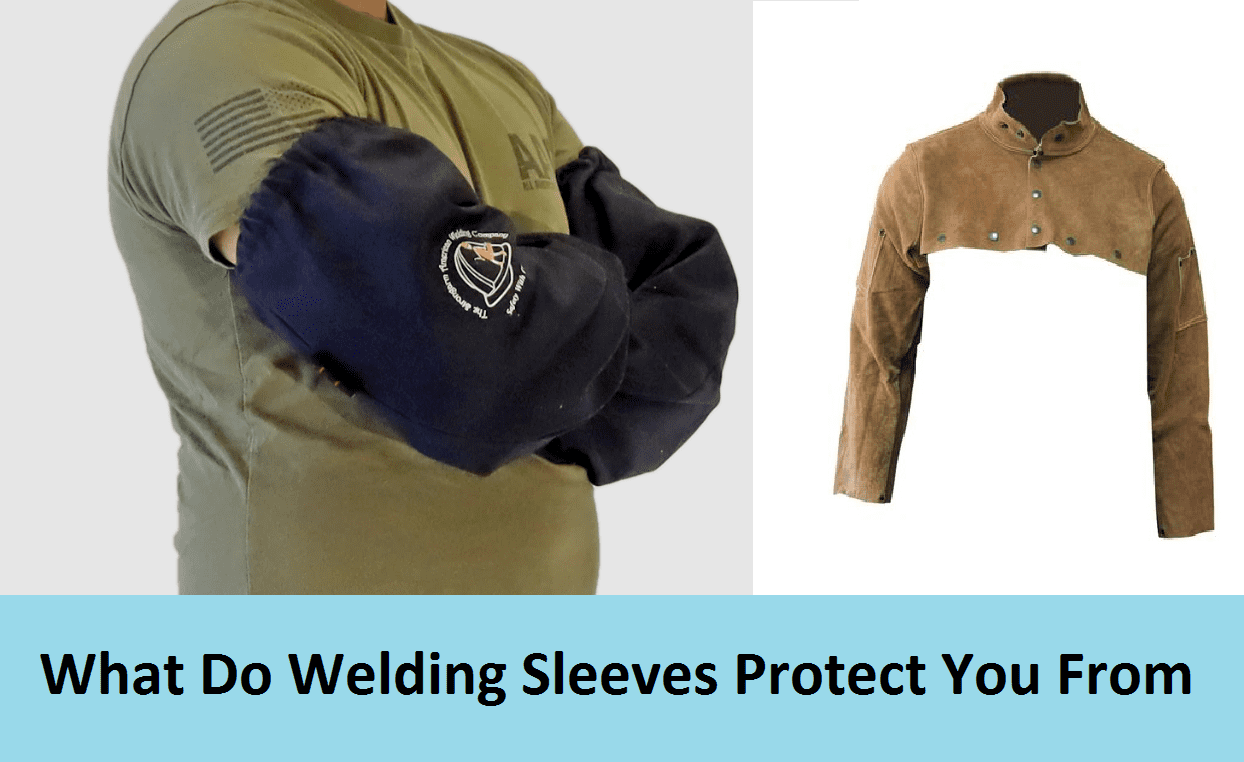Introduction of What Do Welding Sleeves Protect You From
Any welding method should only be performed if you have worn proper safety gear. This includes a welding helmet, sleeves, gloves, leather boots and a welding jacket.
Here our focus is on the welding sleeves! You must refrain from performing any welding process without wearing protective sleeves. Their primary purpose is to protect the welder from heat and sparks. They are either made of treated cotton or leather and manage to withstand heat and excessive temperature.
Welders prefer cotton-made welding sleeves because they are more breathable and do not produce suffocation. In addition, these sleeves are pulled on right over the wrist, and thorough protection and safety from flames and sparks are assured. The remaining details are written below:
What is a welding sleeve?
A welding sleeve is believed to be the most important safety gear all welders must wear. It is a safety clothing piece worn on the arms to protect them from heat, flame and sparks. Brands manufacture safety sleeves from leather, treated fabrics, cotton or other heat-resistant materials. If we talk about the modern welding sleeves, they remain pulled over the hand and wrist and extend over the arm and shoulder.
According to experts, the welder seems at the highest risk of injury if he has not worn welding sleeves and gloves. You must not assume that sleeves will restrict your welding movement; that does not happen. They are designed to ensure smooth movement and flexibility, and you can weld in a restricted-free environment.

You never know when your arms will make a destructive encounter with sparks and flames, that is why wearing good-quality welding sleeves is mandatory. The choice is up to you whether you want to have sleeves made of leather or treated fabrics. Some welders prefer buying sleeves made of heat- and spark-resistant materials.
What is the purpose of welding sleeves?
As mentioned above, welding sleeves safeguard the welder from flames and sparks. They ensure extreme safety and protection and keep your arms and shoulders hurt-free.
Furthermore, this safety gear promises more arm movement and functionality and also maintains mobility and comfort. You must wear them when grinding, welding, brazing, soldering and woodcutting. Thus, welding sleeves are meant for all those tasks that need extensive protection.
How to choose a welding sleeve?
You should consider some factors that help you choose the right welding sleeve. We all know this protective gear comes in many shapes, sizes, materials and lengths. You can choose the option that suits your welding project need.
Length
Determine beforehand what kind of sleeve length you are comfortable in wearing! Ideally, males whose arms measure 25 inches can have welding sleeves of 18 inches. Additionally, welders with longer arms or more than 25 inches must opt for welding sleeves measuring 23 to 25 inches.
Quality of material
Look for a welding sleeve that is made of quality materials. If it is spark and heat-resistant, then that is great! The materials’ quality determines how far they can protect the welder’s arms and shoulders from heat and sparks. A range of fire retardant fabrics has been launched, choose one that fits smoothly on your arm and ensures comfort. Rest, you can have the welding sleeves made from Kevlar, leather, or cotton.
Style and comfort
No doubt, style and comfort matter the most when choosing welding sleeves. It is advised to get the sleeves of the right measurement, perfect fitting and made of the right material. Consider the option that promises comfort and functionality. Some welding sleeves are available in the markets with adjustable elastic sewn around them. This way, you can comfortably adjust the sleeve according to your arm measurement.
Basic kinds of welding sleeves
Below you can check the basic details regarding how many types of welding sleeves there are:
Kevlar welding sleeves
Kevlar welding sleeves assure 100% heat protection. It is a strong and durable synthetic fiber that keeps the welder arm protected and secured from flames, sparks, cuts and abrasions. Furthermore, these sleeves remain highly lightweight and comfortable to wear. The Kevlar fiber does not shrink at all when exposed to flame and heat. Rest, these are machine-washable.
Leather welding sleeves
Leather is also the most durable fabric from which welding sleeves are made! They are known for offering maximum heat and fire resistance and providing 100% flexibility and ease of movement while you weld. Cleaning leather sleeves seem friendly and easy looking.
Some sleeves are made of cowhide split leather and further reinforced with protective Kevlar. Such a combination guarantees more protection. The usage of two fire-retardant fabrics in welding sleeves makes them extensively reliable.
Cotton welding sleeves
Cotton sleeves remain the most comfortable to wear. Welders prefer wearing sleeves specifically made of treated cotton. It is the lightest fabric and gives a comfortable feel while you weld.
Besides, cotton seems a thinner and breathable fabric but looks least heat and spark-resistant. Though you will get protection from flame exposure as well as light-duty welding sparks, but thorough protection is not promised.
Conclusion
Thus, from now onwards, make it a priority and mandatory practice to wear sleeves when welding. It is a crucial safety gear that must be addressed at any cost. If you prioritize wearing a welding helmet, gloves and apron, then make it compulsory to wear welding sleeves.
On opting for this practice, you can guarantee to protect your arms and even the whole shoulder from heat, flames and sparks. A variety of sleeves made of treated cotton, leather and Kevlar are present in the shops; pick the one you find most comfortable to wear.
Instead of injuring your arm when welding or getting a skin burn because you have not worn this safety gear, that is the biggest blunder you have made. Welding is risky, and it must be carried out in the safest environment and wearing the right protective gear. Stay tuned!
